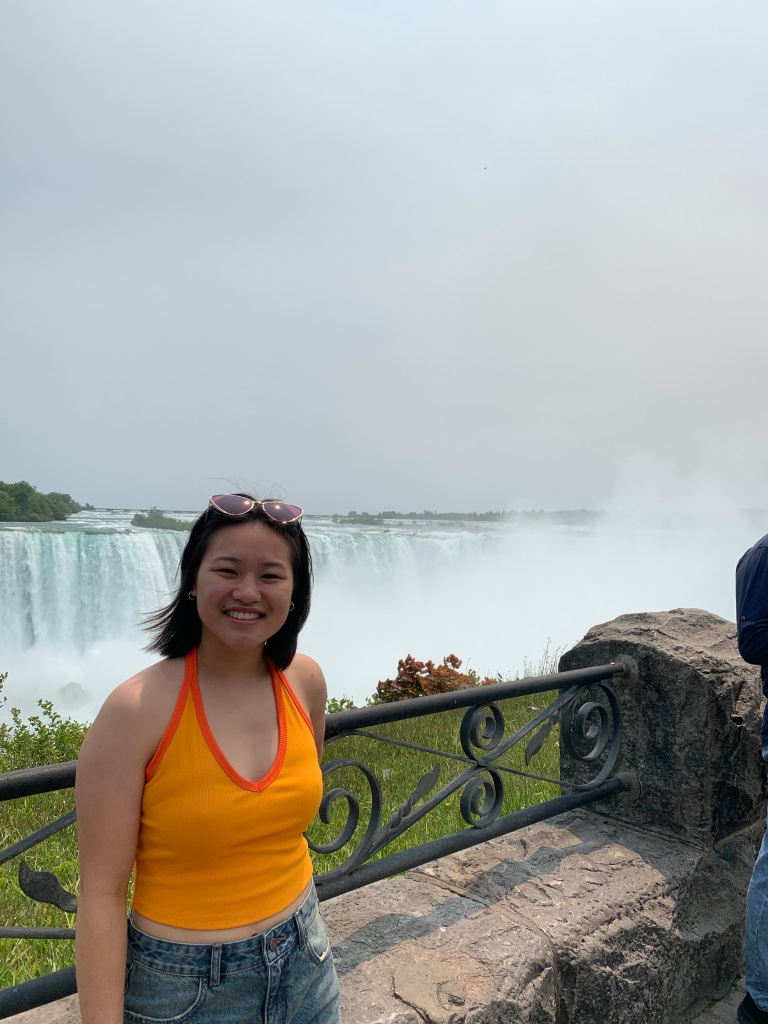It’s the beginning of another summer, and I’m looking forward to outdoor barbecues, swimming in lakes and pools, and sharing my home-made ice cream with friends and family. One thing that I won’t encounter this summer, but I did last year, is a Canadian goose. In summer 2023, I ventured north from the University of Maryland – College Park to Waterloo, Canada, for a position at the University of Waterloo. The university houses the Institute for Quantum Computing (IQC), and the Perimeter Institute (PI) for Theoretical Physics is nearby. I spent my summer at these two institutions because I was accepted into the IQC’s Undergraduate School on Experimental Quantum Information Processing (USEQIP) and received an Undergraduate Research Award. I’ll detail my experiences in the program and the fun social activities I participated in along the way.
For my first two weeks in Waterloo, I participated in USEQIP. This program is an intense boot camp in quantum hardware. I learned about many quantum-computing platforms, including trapped ions, superconducting circuits, and nuclear magnetic resonance systems. There were interactive lab sessions where I built a low-temperature thermometer, assembled a quantum key distribution setup, and designed an experiment of the Quantum Zeno Effect using nuclear magnetic resonance systems. We also toured the IQC’s numerous research labs and their nano-fabrication clean room. I learned a lot from these two weeks, and I settled into life in goose-filled Waterloo, trying to avoid goose poop on my daily walks around campus.
Once USEQIP ended, I began the work for my Undergraduate Research Award, joining Dr. Raymond Laflamme’s group. My job was to read Dr. Laflamme’s soon-to-be-published textbook about quantum hardware, which he co-wrote with graduate student Shayan Majidy and Dr. Chris Wilson. I read through the sections for clarity and equation errors. I also worked through the textbook’s exercises to ensure they were appropriate for the book. Additionally, I contributed figures to the book.
The most challenging part of this work was completing the exercises. I would become frustrated with the complex problems, sometimes toiling over a single problem for over three hours. My frustrations were aggravated when I asked Shayan for help, and my bitter labor was to him a simple trick I had not seen. I had to remind myself that I had been asked to test drive this textbook because I am the target audience for it. I offered an authentic undergraduate perspective on the material that would be valuable to the book’s development. Despite the challenges, I successfully completed my book review, and Shayan sent the textbook for publication at the beginning of August.
After, I moved on to another project. I worked on the quantum thermodynamics research that I conduct with Dr. Nicole Yunger Halpern. My work with Dr. Yunger Halpern concerns systems with noncommuting charges. I run numerical calculations on these systems to understand how they thermalize internally. I enjoyed working at both the IQC and the Perimeter Institute with their wonderful office views and free coffee.
Midway through the summer, Dr. Laflamme’s former and current students celebrated his 60th birthday with a birthday conference. As one of his newest students, I had a wonderful time meeting many of his past students who’ve had exciting careers following their graduation from the group. During the birthday conference, we had six hours of talks daily, but these were not traditional research talks. The talks were on any topic the speaker wanted to share with the audience. I learned about how a senior data scientist at TD Bank uses machine learning, a museum exhibit organized by the University of Waterloo called Quantum: The Exhibition, and photonic quantum science at the Raman Research Institute. For the socializing portion, we played street hockey and enjoyed delicious sushi, sandwiches, and pastries. By coincidence, Dr. Laflamme’s birthday and mine are one day apart!
Outside of my work, I spent almost every weekend exploring Ontario. I beheld the majesty of Niagara Falls for the first time; I visited Canada’s wine country, Niagara on the Lake; I met with friends and family in Toronto; I stargazed with the hope of seeing the aurora borealis (unfortunately, the Northern Lights did not appear). I also joined a women’s ultimate frisbee team, PPF (sorry, we can’t tell you what it stands for), during my stay in Canada. I had a blast getting to play while sharpening my skills for the collegiate ultimate frisbee season. Finally, my summer would not have been great without the friendships that I formed with my fellow USEQIP undergraduates. We shared more than just meals; we shared our hopes and dreams, and I am so lucky to have met such inspiring people.
Though my summer in Waterloo has come to an end now, I’ll never forget the incredible experiences I had.






